This article was co-authored by Steve Horney PT, MPT, MTC, CSCS and by wikiHow staff writer, Kyle Hall. Steve Horney is a Licensed Physical Therapist and the Owner of Integrated Health Sciences, a New York City-based company that provides continuing education, health care products, and manual and movement physical therapy. Steve has over 15 years of academic and professional physical therapy training and specializes in the assessment and treatment of athletes with the goal of helping them become pain-free and less susceptible to injury. Steve is also a certified strength and conditioning specialist (CSCS) from the National Strength and Conditioning Association (NSCA). He received a BS in Health Science from Quinnipiac University in 2004 and a Masters of Physical Therapy (MPT) from Quinnipiac University in 2006. He then completed his Manual Therapy Certification (MTC) from the University of St. Augustine in 2014.
There are 17 references cited in this article, which can be found at the bottom of the page.
This article has been viewed 69,460 times.
A sudden knee injury can put a damper on your workout routine, but fortunately, there are lots of ways you can stay in shape while you wait for your injury to heal. The key is to focus on exercises that won’t put a lot of strain on your knee and to start out slowly so you don’t make your injury worse. You should also talk to your doctor or physical therapist before you get started so they can help you come up with a safe routine based on the severity of your injury. Once you find the right regimen, you’ll be able to get back in the swing of things and start working out regularly again.
Steps
Working Out Safely
-
1Talk to your doctor before you start a workout regimen with a knee injury. Doing the wrong exercises while you have a knee injury can strain your knee and possibly cause long-term damage. Therefore, make sure you get the go-ahead from your doctor first. Depending on the extent of your injury, your doctor may recommend only very light activity.[1]
- Always follow your doctor's advice so that your injury heals properly and as quickly as possible.
-
2Warm up before your workout to help protect your knee from further injury. Go on a slow, 5-minute walk to help get your legs warmed up before your workout. Warming up is an important way to prevent exercise-related injuries, especially when you're already injured.[2]
- Not warming up before your workout will put you at risk of injuring your knee more.
- You can also go for a 5-minute walk after your workouts to cool down and slowly bring your heart rate back to its normal speed.[3]
Advertisement -
3Reduce the intensity and frequency of your workouts. Working out at the same intensity as you were before your injury may be too much for your knee. Instead, work out in shorter sessions with a decreased amount of activity. Then, gradually increase the duration and intensity of your workouts so your knee has time to adjust.[4]
- For example, if you're used to running for 90 minutes on 6 days of the week, you may start with 10 minutes of swimming immediately after your injury. Slowly, you should increase the amount you swim until you've rebuilt some strength and resistance in your leg. Then, you can start transitioning back to running, starting with short, gentle jogs.
- If you typically do resistance training, you may start with a focused, gentle resistance routine for your injured leg, under the advisement of your doctor or a physical therapist. This can be supplemented with a more vigorous upper body routine.
-
4Avoid exercises that will put a lot of stress on your knee. Exercises like squats, lunges, leg presses, and running can strain your knee and make your injury worse.[5] If you need to do these exercises, work with a physiotherapist or kinesiologist on how to properly modify them to accommodate your injury. Alternatively, you can focus on exercises that won’t put a lot of pressure on your knee, like:
-
5Stop working out if you experience sudden pain in your knee. While exercise can actually help your knee heal faster, it’s important that you don’t overexert yourself or you could make your injury worse. If your knee starts to hurt while you’re working out, it’s a sign you’re putting too much strain on it and that you should take a break.[6]
- If you're unable to work out without experiencing pain in your knee, talk to your doctor about the best path forward.
Trying Knee-Friendly Cardio Exercises
-
1Go swimming for a low-impact cardio exercise. Swimming can help you burn calories without risking your knee injury getting worse. Try swimming laps and doing different strokes, like the butterfly stroke and the backstroke.[7]
- You can also try jogging in the water since you won’t be putting as much stress on your knees.[8]
- You can burn 350-570 calories an hour by swimming, depending on the level of intensity.
-
2Work out with a rowing machine for a knee-safe cardio exercise. Rowing is a low-impact exercise that can help you get cardio without aggravating your knee. Rowing may not be recommended for all knee injuries, so be sure to consult your physical therapist or doctor before adding it to your daily exercise routine.
- You can burn between 400-800 calories using a rowing machine for 1 hour, depending on your weight and the intensity level you're using.
-
3Exercise on an elliptical for a knee-friendly cardio workout. Ellipticals are safer for a knee injury than a treadmill because your feet stay on the pedals, which limits the impact put on your knees. If you want to burn calories and get your heart rate up, spend time on an elliptical at home or at the gym.[9]
- Start with 5-10 minutes on the elliptical after your injury, and work up toward 20-30 minutes, increasing your time by 1-2 minutes at a time. Keep a slow, steady pace and a low elevation, especially at first.
- 30 minutes on an elliptical can help you burn 170-320 calories, depending on your weight and intensity level.[10]
-
4Ride a bicycle to get your heart rate up without hurting your knee. Similar to an elliptical, riding a bicycle is a great cardio exercise that will put less strain on your knees than running. Stick with stationary or recumbent bicycles since a regular bike may be too hard on your knee.[11]
- You can burn 250-700 calories riding a stationary bike for 30 minutes, depending on your weight.[12]
- Make sure you’re not riding on an incline or you could make your knee injury worse.
- Most stationary bikes have different intensity settings you can choose from. Start out with a low-intensity setting and gradually increase the level of intensity so you don't strain your knee.
Doing Knee-Friendly Leg Exercises
-
1Do resistance-band exercises with a limited range of motion. resistance bands using a limited range of motion. Start small with a single set of 3-4 reps at a time, and gradually build up from there. Keep your pace slow and steady.[13]
- You may want to start your exercises using no bands at all so that you can get used to the range of motion required. Then, gradually add resistance with bands or by fastening ankle weights to your thigh just above your knee.
-
2Try doing some heel raises to strengthen your calves. To do heel raises, start by standing up straight in front of a chair or counter so you have something to rest your hands on. Then, slowly stand up on your toes. After a couple of seconds, slowly lower back down onto your feet and repeat.[14]
- Try doing a single set of 3-4 reps. Once you're comfortable with that, gradually add more sets and reps.
-
3Work out your core by doing some leg lifts. To do leg lifts, start by kneeling on your hands and knees so your knees are under your hips, and your hands are under your shoulders. Raise one leg behind you as far as you can, squeezing your gluts as you do so. Then, lower your leg to the starting position.[15]
- Do a single set of 3-4 reps at first. Then, gradually increase the number of sets and reps you're doing.
-
4Do inner thigh circles to work out your thighs without straining your knee. To do inner thigh circles, start by lying down on the floor on your side. Raise your legs so they’re extended straight above your hips. Then, flex your feet and point your toes outward so your heels are touching. When you’re ready, open your legs and rotate them outward in a circle before bringing them back together. Once they’re back together, repeat.
- Do 3 sets of 20 reps. If that's too much, start with 1 or 2 sets instead and gradually add more reps until you're at 3 sets.
- To get more stability, try doing this exercise laying about 1 ft (0.30 m) in front of a wall. Bring your leg slightly behind you and push it into the wall, then do the leg lift.[16]
-
5Try side plank hip bridges to tone your glutes while going easy on your knee. Start by lying down on your right side and resting your upper body on your right elbow and forearm. Put your left hand on the back of your head. Next, slightly bend your bottom leg while you straighten your top leg. When you’re ready, lift your top leg until it’s above your hips and hold it for 1 second. Finally, lower your leg back to the floor and repeat.
- Try doing 3 sets of 20 reps with each leg. You can also start with 1 or 2 sets and slowly increase the number of reps you're doing during each workout.
- Performing a side plank with your legs straight is ideal. However, if you can't do that safely, try a side plank on your knees. You can also work the same muscle groups by elevating your arm on a couch or bed.[17]
Working Out Your Upper Body
-
1Do some upper body exercises while seated if it's too painful to stand. Certain upper body exercises can be performed while sitting down so you don't have to worry about putting too much pressure on your knee. You don't have to do your upper body exercises sitting down, but it can be helpful if you're suffering from a particularly painful knee injury. Some upper body exercises you can do while seated include:[18]
-
2Try doing bodyweight exercises if you want something with minimal resistance. If your knee is in pain, bodyweight exercises can be a nice way to work out your upper body without using heavy weights or machines. Some bodyweight exercises you can try are:[19]
- Bench dips
- Pullups
- Inverted rows
-
3
References
- ↑ https://www.health.harvard.edu/pain/knee-sprain-
- ↑ https://www.everydayhealth.com/knee-pain/exercising-with-knee-pain.aspx
- ↑ https://www.pennmedicine.org/updates/blogs/musculoskeletal-and-rheumatology/2017/february/injury-prevention-three-cool-down-steps-for-runners
- ↑ https://www.everydayhealth.com/knee-pain/exercising-with-knee-pain.aspx
- ↑ https://www.prevention.com/fitness/a20427943/exercises-for-knee-pain/
- ↑ https://www.webmd.com/fitness-exercise/guide/knee-ligament-injuries#2
- ↑ http://www.cnn.com/2009/HEALTH/expert.q.a/10/02/knee.pain.exercise.jampolis/index.html
- ↑ https://www.theguardian.com/lifeandstyle/the-running-blog/2013/aug/05/running-training-injury-recovering
- ↑ https://www.dynamicsphysicaltherapy.com/Newsletters/Full-Articles/Knee-Pain/a~10025/article.html
- ↑ https://caloriesburnedhq.com/calories-burned-on-elliptical/
- ↑ https://www.betterhealth.vic.gov.au/health/healthyliving/rowing-preventing-injury
- ↑ https://caloriesburnedhq.com/calories-burned-biking/
- ↑ http://www.sportsinjuryclinic.net/sport-injuries/knee-pain/acl-injury/strengthening-acl-injury
- ↑ https://www.arthritis.org/living-with-arthritis/exercise/videos/lower-body/standing-heel-raise.php
- ↑ https://www.nhs.uk/live-well/exercise/10-minute-firm-butt-workout/
- ↑ Steve Horney PT, MPT, MTC, CSCS. Licensed Physical Therapist. Expert Interview. 3 June 2020.
- ↑ Steve Horney PT, MPT, MTC, CSCS. Licensed Physical Therapist. Expert Interview. 3 June 2020.
- ↑ https://www.weightwatchers.com/us/blog/fitness/upper-body-chair-workout
- ↑ https://www.self.com/story/10-strength-training-tips-for-beginners-that-will-make-your-workout-more-effective
About This Article
If you have a knee injury but still want to work out, first check that it’s okay with your doctor so you don’t end up causing long-term damage. Once you get their approval, remember to warm up your legs before exercising by going for a slow, 5-minute walk. Instead of doing leg exercises that put stress on your knee, focus on upper-body or floor exercises. For example, you can do bicep curls, pullups, crunches, and planks. If you want to do cardio, try swimming laps since this is a low-impact exercise that won’t risk your knee getting worse. For more tips from our Fitness co-author, including what exercise machines you can use for knee-friendly cardio workouts, read on!



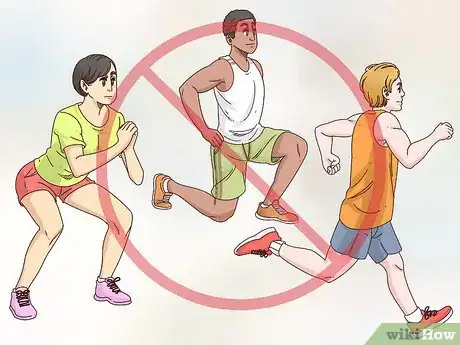
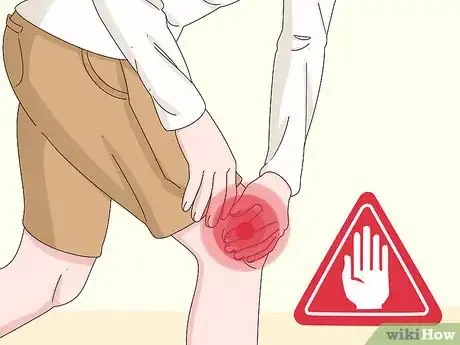


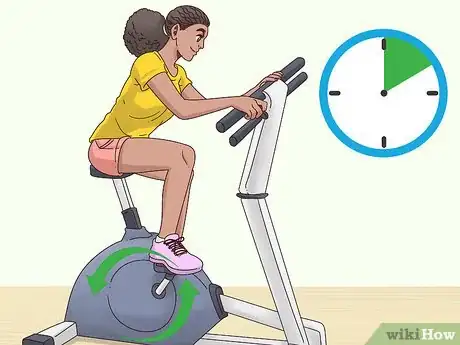

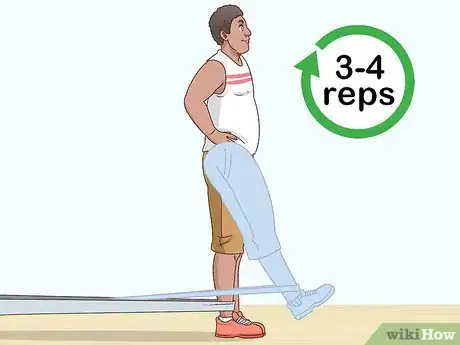
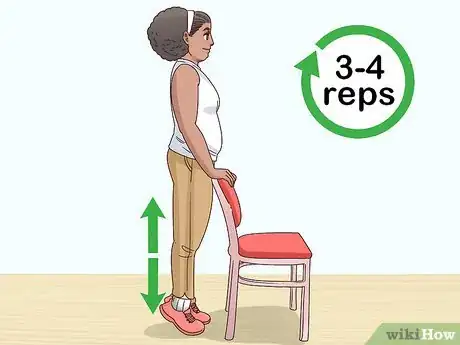
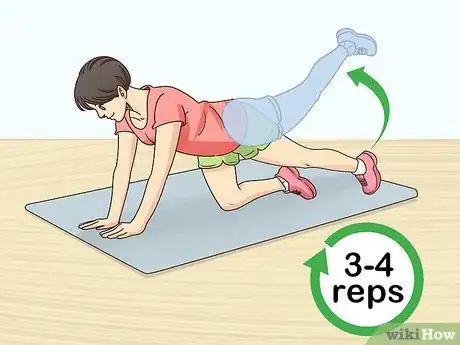
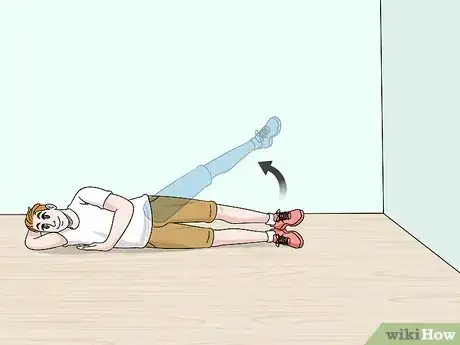

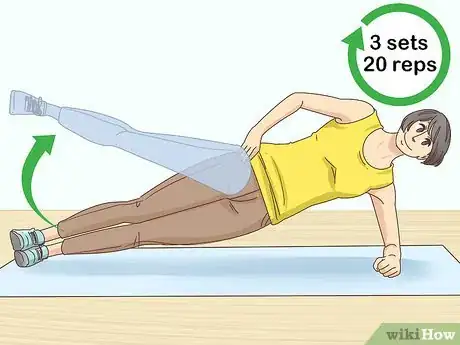
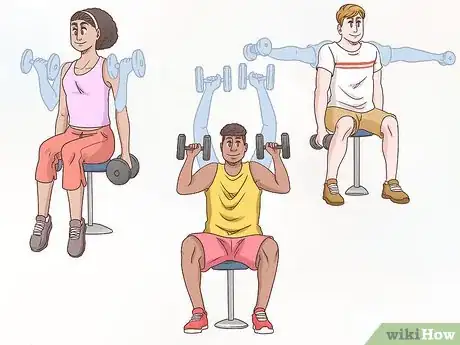
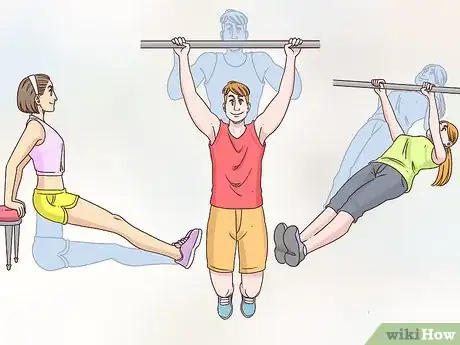
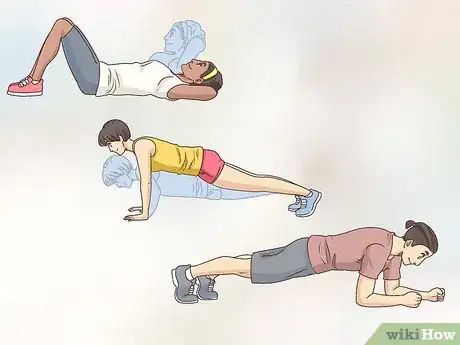








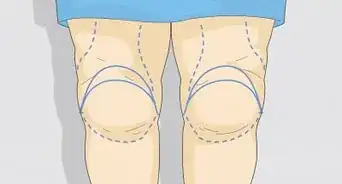



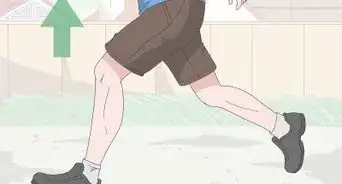













































Medical Disclaimer
The content of this article is not intended to be a substitute for professional medical advice, examination, diagnosis, or treatment. You should always contact your doctor or other qualified healthcare professional before starting, changing, or stopping any kind of health treatment.
Read More...